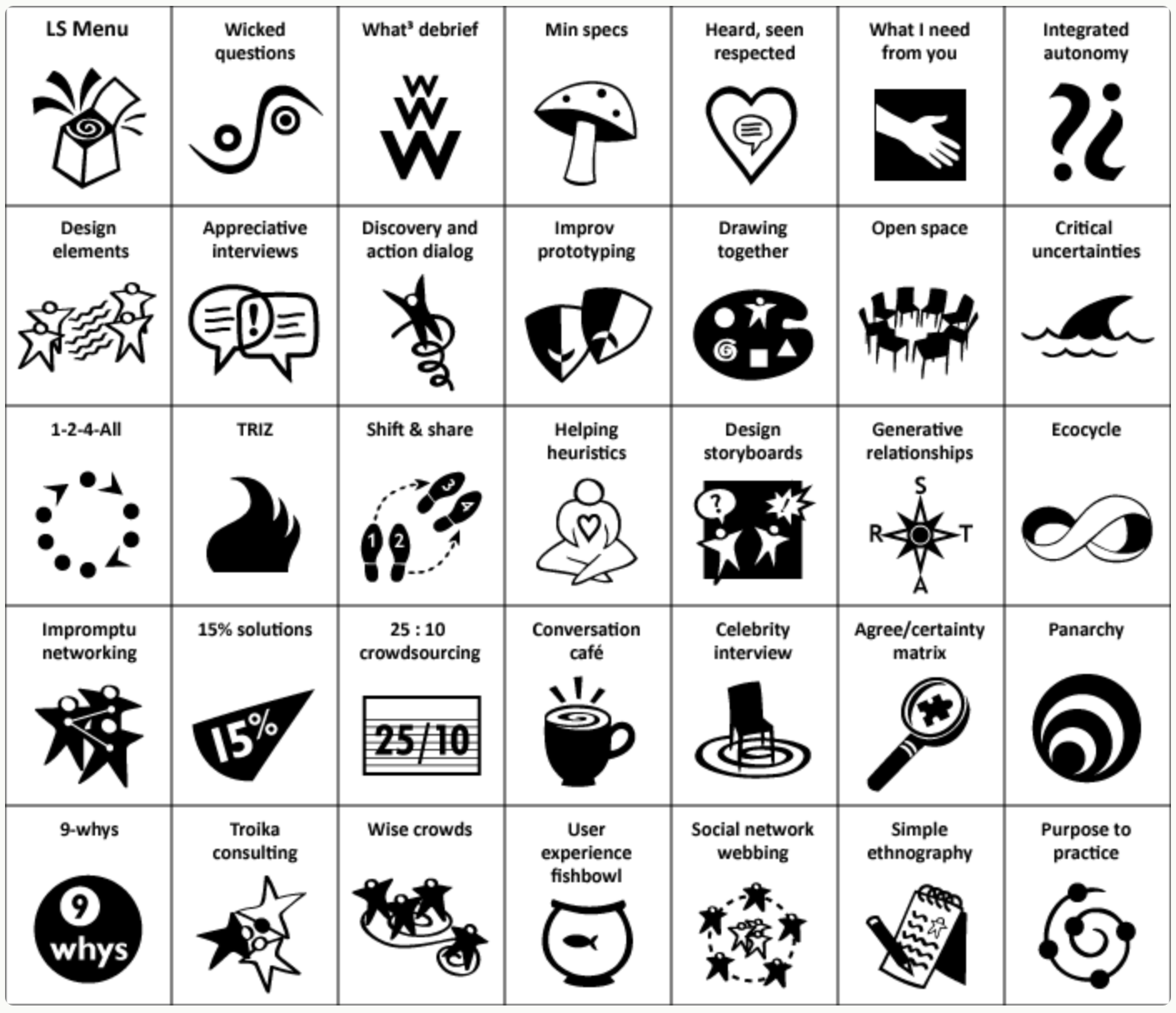Liberating Structures – Changing Meetings
These last few weeks have once again demonstrated how valuable well orchestrated group work can be. But they’ve also shown that physical appointments with everyone in the same room need stronger justification to be truly valued. With this in mind, I thought now could be a good time to introduce one of my preferred tool boxes that I use to help clients improve their own process competencies for the challenges ahead: the Liberating Structures.

The Liberating Structures are made up of 33 meeting formats developed or compiled by Henri Lipmanowicz and Keith McCandless to improve the way we collaborate and meet. They are also widely used in an Agile Coaching context. Depending on the format, they can be used for very different purposes, including
- Sharing and distributing
- Discovery and development
- Understanding and planning
- Collaboration and support for one another
A few examples: 1-2-4-all is a basic format to enable structured group reflection: First, each person reflects alone, then pairs align, then groups of four, then the entire group. I often also use 1-3-6-all.
Nine-Whys allows us to find out rather quickly what’s really important – for me and for the group. You put pairs together, one asks the other about the topic: Why is it important to you? This is repeated 9 times, going deeper and deeper into the subject matter. Then in reverse.
Meanwhile, social network webbing maps a social network in a short period of time so it can be put to better use and perhaps expanded. This is achieved by asking questions like: who do we need in our network, who relates to whom and how, who do we want in addition and who can bring us closer to other important individuals?
What is it that I like about these formats? Well, Liberating Structures are actually quite simple and straightforward. At the same time, they help to clarify the goal of the meeting and how all participants can be leveraged most effectively. They enable a structured workshop that promotes participation and they give new momentum, opening up different perspectives compared to the “classic formats” such as presentations, guided discussion, status updates, brainstorming or open discussion. In my experience, this often brings meetings to a different “level” and thus creates a different value.
Finally, they prove to be extremely practical for self-learners. They have a website where they are described in a focused way and are also more broadly reflected in the wider community. And they have a common philosophy that is helpful for other formats.
I invite you to explore the website and the various methods, or to read the very good introductory article written by the two “inventors”. Of course there are also tips for online formats which are still worth a look even if you have already read a lot about them.
What is your view of these formats? What would you like to use them for? Is there any other area where you would like to improve collaboration?


